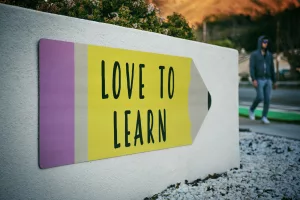Embarking on the journey of learning to dance is not just about mastering specific movements or steps. It is a transformative experience that can enrich your life in countless ways. From physical health benefits to emotional well-being, dancing offers a holistic approach to personal growth and self-expression. Let’s delve deeper into the 16 reasons why you should consider embracing the art of dance, and explore some additional insights and tips along the way.
- Improved Physical Fitness and Coordination
Dance is a fantastic form of exercise that engages multiple muscle groups and enhances cardiovascular health. Through regular practice, you can improve your flexibility, stamina, and overall physical fitness. The intricate movements involved in various dance styles help enhance coordination and balance, leading to better posture and body awareness.
- Practical Tip: Try incorporating different dance styles into your routine, such as ballet for flexibility, salsa for stamina, and jazz for coordination. Each style targets different areas of the body and can provide a well-rounded workout.
- Real Example: Consider the story of Anna, who started dancing salsa twice a week. Within a few months, she noticed a significant improvement in her leg strength and endurance, which she now applies to her weekend hikes.
- Stress Relief and Mental Well-being
Moving to music and immersing yourself in the rhythm can be a powerful stress-reliever. Dancing acts as a form of meditation in motion, allowing you to channel your emotions and release tension. The endorphins released during physical activity can elevate your mood and reduce feelings of anxiety and depression.
- Practical Tip: Use dance as a form of active meditation. Focus on the music and let your body move naturally without overthinking. This can be particularly effective if you’re feeling overwhelmed or anxious.
- Real Example: Mark, who works in a high-pressure environment, finds solace in weekly dance classes. He often describes emerging from class feeling lighter, more focused, and ready to tackle the challenges ahead.
- Boosted Confidence and Self-esteem
Mastering new dance steps and routines can boost your confidence levels significantly. As you progress in your dance journey, you learn to trust your abilities and push past your comfort zone. The sense of achievement that comes with mastering a challenging routine can enhance your self-esteem and self-worth.
- Practical Insight: Start with a beginner’s class and gradually work your way up. Celebrate small victories, like learning a new step, and use these as building blocks for your confidence.
- Common Mistake: Many people set unrealistic expectations initially. Remember, even the best dancers started as beginners. Be patient with yourself and enjoy the learning process.
- Social Connection and Community
Dance classes and events provide a wonderful opportunity to connect with like-minded individuals who share your passion for movement and music. Building connections through dance can foster a sense of belonging and create a supportive community. Dancing with others enhances communication skills, teamwork, and empathy.
- Practical Tip: Attend dance social events or join a dance troupe. This can help you meet new people and expand your circle while sharing the joy of dance.
- Real Example: Sarah joined a local swing dance group and quickly found herself surrounded by a network of supportive friends who share her enthusiasm for dance.
- Cognitive Benefits and Mental Agility
Learning choreography, remembering sequences, and synchronizing with music require mental focus and agility. Dance has been shown to improve cognitive function, memory, and concentration levels. Engaging in dance challenges your brain in new ways, promoting neuroplasticity and enhancing learning abilities.
- Practical Insight: Try memorizing short routines and gradually increase their complexity. This not only sharpens your memory but also enhances your ability to think quickly on your feet.
- Relevant Data: Studies suggest that activities like dance can delay the onset of age-related cognitive decline, making it beneficial for long-term brain health.
- Creative Expression and Artistic Outlet
Dance is a powerful form of creative expression that allows you to convey emotions, stories, and concepts through movement. Whether you prefer the elegance of ballet, the passion of tango, or the energy of hip-hop, dance offers a versatile canvas for self-expression. Embracing your creativity through dance can unlock a deeper sense of authenticity and personal voice.
- Practical Tip: Experiment with improvisational dance sessions. Put on your favorite music and let your body interpret the rhythm and emotions of the song.
- Case Study: Consider the journey of Mia, who, through contemporary dance, found a new language to express her experiences and emotions that words couldn’t capture.
- Increased Energy Levels and Vitality
Regular dance practice can boost your energy levels and invigorate your body and mind. The dynamic movements and rhythms of dance stimulate circulation, oxygenate the body, and increase vitality. Dancing is a natural pick-me-up that can combat feelings of fatigue and lethargy, leaving you feeling rejuvenated and energized.
- Practical Tip: If you’re feeling sluggish in the afternoon, take a short dance break. Even just a few minutes can elevate your energy levels and improve your mood.
- Enhanced Emotional Intelligence and Empathy
Dance promotes emotional intelligence by encouraging individuals to express and interpret emotions through movement. By attuning yourself to the emotions conveyed in dance, you develop greater empathy and emotional awareness. Dancing fosters sensitivity to non-verbal cues, deepening your understanding of human emotions and enhancing interpersonal relationships.
- Real Example: Julian, who struggled with expressing emotions verbally, found that dance gave him a new way to connect with others on an emotional level, improving his relationships significantly.
- Personal Growth and Self-discovery
Embarking on a dance journey is a path of self-discovery and personal growth. It challenges you to confront limitations, embrace vulnerability, and push beyond boundaries. Through dance, you gain insights into your strengths, weaknesses, and potential for growth. The transformative nature of dance encourages introspection and empowers you to evolve on a physical, emotional, and spiritual level.
- Practical Tip: Keep a dance journal where you reflect on your experiences, challenges, and growth. This can be a powerful tool for personal development and self-reflection.
- Improved Body Image and Self-acceptance
Dance celebrates bodies of all shapes, sizes, and abilities, promoting a positive body image and self-acceptance. Engaging in dance can help you appreciate the capabilities and beauty of your body, irrespective of societal standards. Moving freely and joyfully without judgment fosters a sense of acceptance and self-love.
- Practical Insight: Focus on what your body can do, rather than how it looks. Celebrate your progress and the unique way you move.
- Cultural Appreciation and Diversity
Dance offers a gateway to exploring diverse cultures, traditions, and histories through movement. Each dance style carries its unique cultural significance, music, and storytelling elements. Embracing different dance forms broadens your cultural awareness, deepens your respect for diversity, and fosters a sense of interconnectedness with global communities.
- Practical Tip: Attend cultural dance workshops or festivals that showcase different dance styles. This not only enriches your dance experience but also broadens your cultural horizons.
- Improved Posture and Alignment
Dance emphasizes proper posture, alignment, and body mechanics, leading to improved physical alignment. By practicing dance techniques, you develop greater body awareness and postural control. Enhanced posture not only contributes to a more graceful and confident presence but also reduces the risk of musculoskeletal injuries.
- Practical Tip: Incorporate stretches and strengthening exercises into your routine to support your dance practice and improve your posture.
- Lifelong Learning and Skill Development
Dance is a lifelong journey of learning, growth, and skill development. There is always something new to explore, whether it’s mastering a challenging sequence, refining your technique, or experimenting with different styles. The continuous pursuit of improvement in dance nurtures a growth mindset and a thirst for knowledge.
- Practical Insight: Set small, achievable goals for your dance practice, such as learning a new routine or improving a specific technique. This keeps you motivated and engaged in the learning process.
- Enhanced Coordination and Motor Skills
Dance requires precise coordination of movements, rhythm, and timing, which can sharpen your motor skills and coordination abilities. The intricate footwork, partner work, and spatial awareness in dance routines challenge your coordination and proprioception. Enhancing your coordination through dance can positively impact your performance in daily activities and sports.
- Real Example: Tom, an avid soccer player, noticed that his footwork improved significantly after taking up ballroom dancing, enhancing his performance on the field.
- Stress Reduction and Mindfulness
Dance serves as a mindful practice that encourages presence in the moment and mindfulness of body sensations. Focusing on the music, movement, and connection with your partner or group enhances your ability to stay present and grounded. Dance offers a meditative escape from daily stressors, promoting relaxation and mental clarity.
- Practical Tip: Dedicate time each week for a dance session where you focus solely on the movements and music. This can become a cherished ritual that centers and calms you.
- Joy, Fun, and Celebration
Above all, learning to dance is a joyful and fun-filled experience that celebrates life, creativity, and human connection. The sheer pleasure of moving to music, expressing yourself through dance, and celebrating milestones creates moments of pure joy and fulfillment. Dance embodies the essence of celebration, allowing you to embrace the present moment with gratitude and enthusiasm.
- Practical Insight: Don’t be afraid to let loose and have fun with dance. Whether it’s a night out at a dance club or a spontaneous kitchen dance party, remember that dance is about joy and expression.
In the realm of personal growth activities, few can match the multifaceted benefits of dance. Whether you’re looking to boost your physical fitness, enhance your cognitive abilities, or simply find a new way to express yourself, dance offers a path worth exploring. As you step onto the dance floor, remember that this journey is uniquely yours, filled with opportunities to discover, connect, and celebrate every step of the way.



